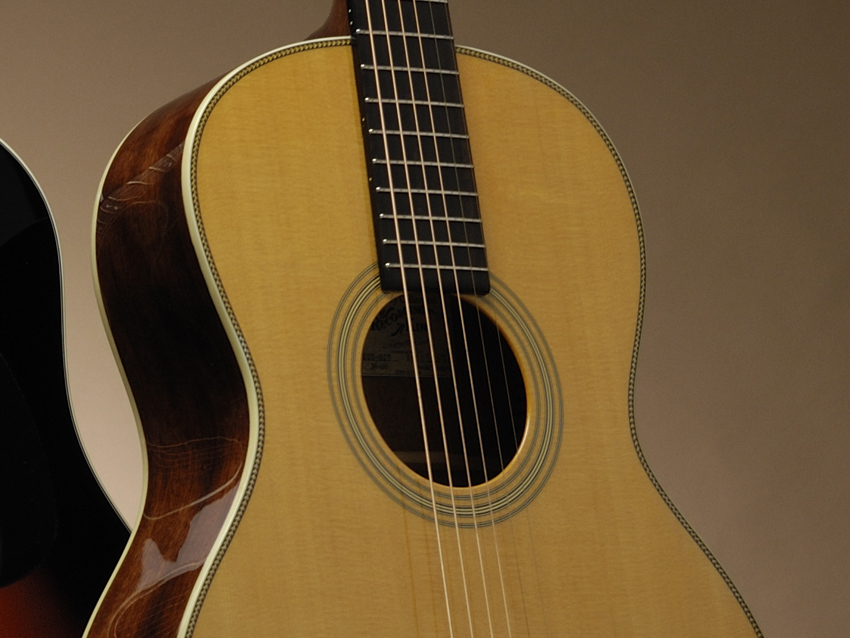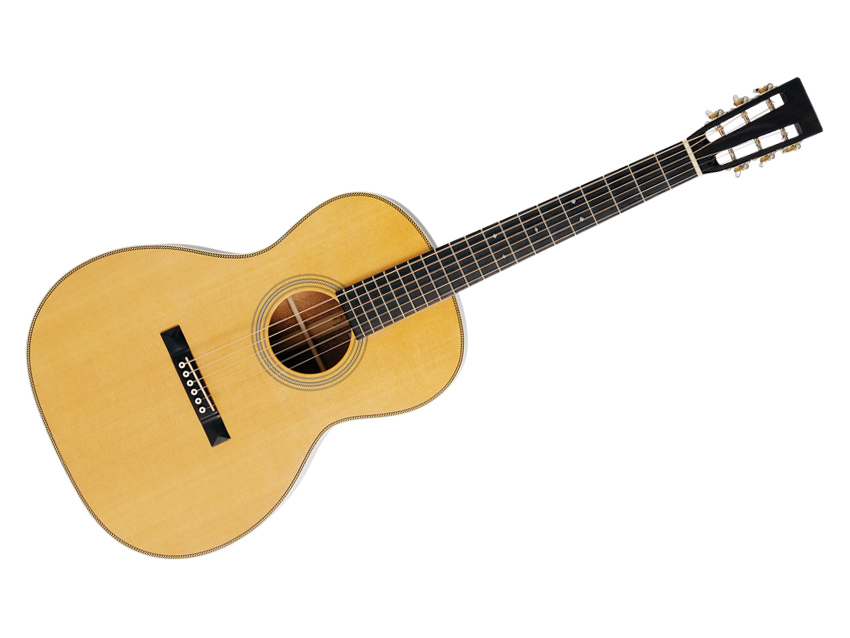MusicRadar Verdict
A tasteful, largely faithful vintage 000 re-creation.
Pros
- +
Convincing sounds. Discreet period trim.
Cons
- -
Wide neck will be too much for some.
MusicRadar's got your back

Recording King ROS-626

Recording King ROS-626
Most flat-top acoustics these days are influenced to a greater or lesser extent by the instruments that were available during the early decades of the 20th century - most notably from pioneer makers Martin and Gibson, but also embracing designs from companies such as Washburn and Larson Bros, for example.
However, when it comes to modern-day acoustics that incorporate overtly historic hallmarks rather than simply passing generic references, the choice becomes somewhat slimmer at pretty much all price points, even though the so-called 'retro' trend has been around for a good few years now.
"The ROS-626 plays with plenty of folk-like verve and clarity."
Recording King's ROS626 is part of the Century Studio Series, which is devoted exclusively to 12-fret, slot-head 000s. The guitar is clearly modelled on Martin's design especially popular during the '20s and early '30s, and it goes one step beyond the Vintage by having a wide fingerstyle neck.
Build
Save for its mahogany (as opposed to rosewood) back and sides, the ROS-626 is a pretty close reworking of Martin's vintage 000-28.
Period detailing includes ivoroid body binding with herringbone top purfling, cross-diamond markers at the fifth, seventh and ninth frets only (supported by a full complement of side dots), an ebony, pyramid- ended bar bridge, a mosaic centre-strip down the back, and open-geared Grover Sta-Tite tuners mimicking the traditional Waverlys.
One minor departure is a saddle of normal length, in contrast to the original's 'long' variety. To help give the guitar an aged look, the (nicely cross-silked) Sitka spruce top is given an amber tinting prior to spraying. It's a subtly done effect and isn't too lurid either.
The 645mm-scale gloss- lacquered neck is one-piece mahogany,with a diamond volute under the peghead and a deepish, 'V'-shaped profile.
The span kicks off at a broad 47mm across the nut, and bridge string spacing is commensurately airy at just under 60mm.
All this may well deter some smaller- handed players, but it's a superb picker, needless to say, and a much less daunting handful in practice than the configuration would suggest.
Sounds
The ROS-626 plays with plenty of folk-like verve and clarity, delivering a brightish, taut tone balanced by sufficient meat and warmth in the bottom end.
The dynamics feel and sound responsive and articulation is well balanced across the strings and sustain is readily forthcoming. It's an appealing blend for fingerstyle playing.
The standard of construction and presentation is commendably good, with very few cosmetic aspects that are below par. Indeed, taking its cue from the illustrious original upon which it's based, the trim and finery displays excellent taste and convey the vintage aura intended.
As for the sizeable neck: well, it goes with the territory, and you're either a fan or not.
Sound-wise, the guitar gives a good account of itself, and has the parlour-cum-folk genre well covered.
“This update reflects everything we believe modern gear should be”: Neural DSP gives the Nano Cortex an almighty power-up with free NanOS 2.0.0 system update
“It’s honestly got me thinking hard about adding one to my own studio set up”: Two Notes Reload II review
“Gloriously adorned with a gold edge burst finish over a gold paisley and sparkle top”: Gretsch unveils the Paisley Penguin – a rare bird that growls – and the Honey Dipper Special, a resonator for all your roots rock manoeuvres









